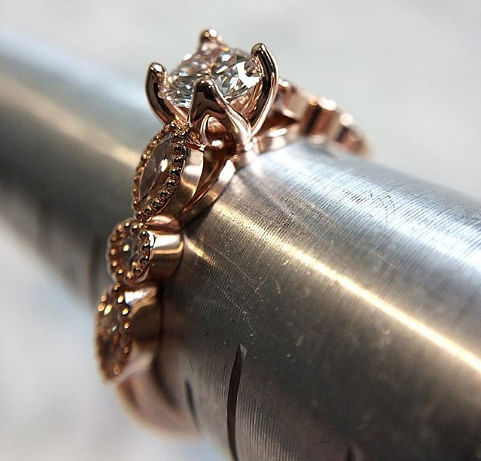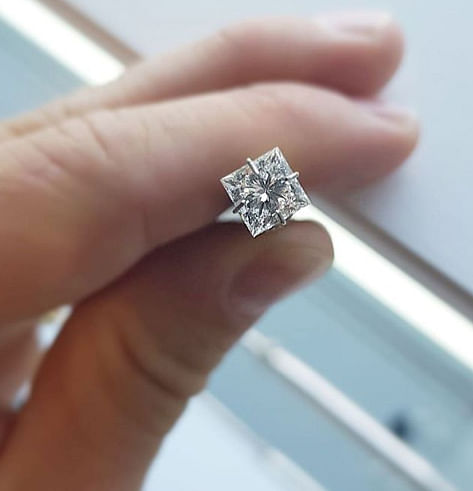If you’ve ever been in the position of commissioning bespoke rings or other jewellery, there’s a good chance that your jeweller will have mentioned the Mohs Scale. And if you’re like most people, there’s also a good chance that you’ll have nodded politely and left it at that. After all, you’re not making the rings, there’s no reason for you to know the technical details. However, if you do buy jewellery regularly, or are about to commission something for a very special occasion – such as an engagement ring – the Mohs Scale is very handy to know.
What is the Mohs Scale?
Devised by Friedrich Mohs in 1812, the eponymous scale is a system with which to rank the hardness of minerals. It basically measures how easy each mineral is to damage/scratch. This allows them to be assessed and used appropriately.
The scale runs from one to 10, with one being the softest and 10 the hardest. Below is the original scale set out by Mohs:
Mineral Mohs Hardness
Talc 1
Gypsum 2
Calcite 3
Fluorite 4
Apatite 5
Orthoclase 6
Quartz 7
Topaz 8
Corundum 9
Diamond 10
All very interesting, but why does this matter to you? You didn’t have your heart set on a talc eternity ring anyway!
Why is the Mohs Scale Important for Jewellery?
There’s a layman assumption that all precious gems are stones, stone is hard, so therefore they will be durable. After all, the Tower of London hosts gems that have been in circulation for hundreds of years. You’re only looking for something to last your lifetime, or maybe pass on to your kids. The thing is, not all precious stones have the durability of diamonds.
Almost everyone knows the thing about diamonds being strong enough to cut glass. Their strength is one of the reasons that they have become forever associated with engagement; they are lasting, like true love. But other stones, though equally beautiful, lack the diamond’s robustness. And this is fine, when they’re set in crowns and highly protected, but not so much when they’ll be set on hands that will be changing baby’s nappies, washing up, going to the gym, or dealing with any of the other facets of modern life. This is where knowledge of the Mohs Scale could help you.
Gemstones, Their Hardness and Their Suitability
Listed below are the gemstones most commonly chosen for jewellery. They are each beautiful and perfect in their own way, but some are more delicate than others. As you can see from their Mohs Scale placing.
Gemstones Mohs Hardness
Turquoise 5
Opal 5.5
Moonstone 6
Bloodstone, Garnet, Peridot, Tanzanite, Zircon 6.5
Quartz, Amethyst, Citrine 7
Aquamarine, Emerald, Pearls, Tourmaline 7.5
Spinel, Topaz 8
Alexandrite 8.5
Corundum, Ruby, Sapphire 9
Diamond 10
When selecting a stone for a ring – or any other piece of jewellery – that is intended to be worn every day, the guiding principle is to look for a gem ranked 7.5 or above on the Mohs Scale. This means that it is resistant to scratching. It’s not infallible, but it is more likely to stand the test of time. That’s not to say that you can’t have an opal anniversary ring, just that you’ll need to be more careful in its care and maintenance.
Creating bespoke jewellery, or choosing ready-made, for any special occasion will always come from the heart. You will be guided by what you believe the recipient will love. And that is really, really important. But sometimes, those heart decisions do need a little bit of input from the head. And knowledge of the Mohs Scale can help with that.








